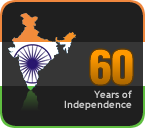
There was a time when vegetables like tomatoes, cauliflowers and cabbage had no place in an orthodox Brahmin kitchen. They were known as ‘English’ vegetables, because they were brought to India by the ruling Englishmen. Today these are household names. There is no rasam made in any kitchen, including the Brahmin kitchen, without tomatoes. Not only for rasam, tomatoes are used for raita (a kind of salad based in yogurt), sambar, and even made into pickles. Green tomato pachadi is a delicacy.
These thoughts flooded my mind as I was cutting tomatoes for a salad at Raji’s place. One of those was about the day in 1942 when my father said that he would teach me how to make cutlets. I was just 15 years old, and unlike today’s children I did not know what a cutlet meant. Anyway I was really happy that my father had taken time from his various activities to teach me to prepare cutlets. He gave me a list of vegetables to be got ready – potatoes, peas, tomatoes, green chillies and ginger. Potatoes and peas were okay with my mother, but she did not allow me to bring the tomatoes into the kitchen, for tomatoes were taboo. I was provided a charcoal portable oven. Following my father’s instructions I prepared the cutlets using sooji (semolina) instead of bread crumbs, and they turned out quite well. My father had tasted the cutlet at a Saturday club dinner, and he wanted his family also to enjoy it. So he got the recipe and helped me to make it.
The tomatoes were used to make sauce to go with the cutlets. Blanch and skin the tomatoes, mash them roughly, add finely cut ginger and green chillies, a dab of sugar and salt, boil for five minutes and the sauce is ready. Later on in life, maybe I remembered this subconsciously and used to make the sauce for my children, adding not just a dab of sugar, but a spoonful, and lots of raisins. How they used to enjoy it!
The Saturday Evening Club was formed by the elite of Trivandrum Society (men only!). Every month on one Saturday, one member would host a grand dinner for the others. There were about 20 members. I vividly remember how the dinner was prepared at our place. First a chef was chosen to cook the menu given by my father. The ‘English’ vegetables played an important part in this dinner. These vegetables were bought from Spencers’s or Koder’s two prominent ‘in’ stores of Trivandrum. My first and only shopping expediton before marriage was going to Koder’s to buy a wedding present for one of my classmates. The food was prepared, not in the kitchen, but in the spacious back verandah, using three sets of bricks to make the stove, and firewood as fuel. A typical menu would be tomato kichadi (raitha), pachadi, aviyal, cauliflower vegetable, cabbage with coconut scrapings, potato roast/stew, onion sambar, rasam, appalam, a sweet, usually mysorpaku, thayir/rasa vadai, a variety of pickles, and of course payasam.
The food was served on plantain leaves, and the guests sat on the floor in front of them to enjoy the meal. We youngsters enjoyed every moment of the day, taking part in most of the activities. The main attraction was the pal payasam(milk and rice pudding), which was almost pink in colour, and next the rasa vadai and the thayir vadai and mysorepaku, and of course the rare dishes made with English vegetabes.
The potato is considered an everyday item today, but in my childhood days, it was considered a rare delicacy. A feast with potato poriyal was summed up as A class. Potato stew pushed back every other dish, and the potato roast was the last word at any feast.
For drinks it was bonji, or lemon juice. Fridges were unheard of. Mud pots were cleaned and filled with water the previous day itself. And to serve the bonji in, silver tumblers were taken out, polished and readied.
I believe even pumpkin was a foreign vegetable, introduced to India by the Portugese, who were called Parangi by us Indians. The pumpkin is known in Thamizh as parangikkai. Like the pumpkin was Indianised in course of time, tomatoes and cauliflower have also become household names.

There was a time when we used to get only seasonal fruits and vegetables. Cauliflower, cabbage, radish are all winter vegetables. As for the Indian vegetables, there are different kinds – lady’s finger in May-June, snake gourd and bitter gourd in August - September, cluster beans in July and brinjals in February, to mention a few.
Now vegetables have no seasons or months – they are available all round the year. When lady’s finger, flat beans and cluster beans were in season, I used to make 'vathal' (pieces parboiled in salt and sun-dried), to be used in off season times. Punjabi women used to sun-dry cauliflower heads and preserve them for the summer days.
One last line. The fruit seller’s cry still echoes in my ears – Bambai ka kela, Allahabad ka guava, Kashmiri sev, Benares ka aam, Hyderabadi angur. (Bananas from Bombay, pears from Allahabad, apples from Kashmir, mangoes from Benares, grapes from Hyderabad) Those days have become bygone days. I miss that Delhi…..





22 comments:
Those capsicums and cauliflowers look very inviting indeed! Sigh! My husband detests one and my son loathes the other!!
maiji aunty,
Another edge of the couch post! I was dangling on every word to see what is next!! The funny thing is just yesterday when I was sharing some Tamil Brahmin cookbooks with my American and Indian friends we were talking about the evolutions of cuisine. For me the amazing thing about Indian cuisine is in two things- the overabundant variety of vegetarian stuff (Americans can't even fathom) and the mere fact that to have such a varied cuisine a culture needs to be sedentary and feel safe to settle down. One needs not only space to store all the food stuffs and spices, but also the cookery vessels and implements!! This thought came when I was studying the Kenyan cuisine and how simple it is because there are a lot of nomads. It is simply Amazing!! Thank you for sharing this!
Nice write-up. Not only those veggies, but my grandmother kept out Papaya, beetroot and onion too. Of course, bread and bakery products were disallowed in the kitchen. My grandmother did not eat any of those, but tomatoes, onion, potato and cabbage were allowed. As kids we never ate cauliflower at all. We saw them only in the market.
But she was renown for cooking [in separate vessels] sambar from onion and potato which was a special dish that most of us craved for, because it had the accompaniments of 'sandige, peni and papad'. She prepared it for the 'Moonlight dinner'. For cutting the onion, there was a separately kept cutting tool.
very nostalgic post. In my home we nevr used to eat onion and garlic, as my grandma thought of them as Tamsik foods:)
I still like to have seasonal vegetables, god has created everything very wisely, as all produce is acording to the climate and all that and here fiddling with that cost us heavily in the health section.
Interesting post, Maiji. In my childhood too, 'Seema' or English vegetables were rarely used at home. At Cochin supplies used to come from Ootty mainly for the Sahibs.
Tomato was 'thakkali' and cabbage was called 'muttakoos'.
Maiji
An interesting leaf from your nostalgic diary of memory...
Surprised to know that Tomato was a taboo in 40s..
Now all the English vegetables have been indianised...
What a beautifully evocative post! In the US, all vegetables are available year-round, and most have no taste at all! And it is the humble "Indian vegetables" that are exotic here!
Hi Jeniffer, came here from your comment on my blog. I have seen your blog before though :)
Vanaspati is hydrogenated vegetable oil - also known as dalda in common parlance...
Nice!
Even more nice since you mentioned Trivandrum. :-)
-Nikhil
I'm delighted to know a person who has living memory of tomato being a foreign vegetable. I've always wondered what indian cuisine would have looked liked before tomato, potato, and chillies made an entry. You must write more on this topic and generally about life in those days.
thanks,
rama
you remind me of my grandmother :) she would also always use tamarind instead of tomatoe. great to read your posts.
My mom says the same, Maiji. She was surprised that the Chrysanthemum is still blooming in our garden. Though having all fruits, vegetables, and flowers in all seasons is cool, I think it kind of makes them lose their importance and personality.
Dear Madam,
I came across your blog and became an instant fan of your blog.One of the principles in my life is to talk to senior citizens and I feel I am taken back by time when I started reading abt the vintage madras blog. I wish I could really have a tea with you in the evening and listen to you all day and learn more from your experiences.
awww...tat'a beautiful post maiji ..through your post people like us, gets to know about those times....i didn't had any clue that our 'thakkali' belonged to english vegetables...thanks for enlightening me....keep up the good work and do keep writing
In my house always also use tamarind instead of tomato. Da incredible flavor to food
I think the obesity is very danger for everybody, is like a pump that can explot any time. So is necesary to take care exercising and taking good and healthy food and stop eating junk food.If you eat more vegetables or fruits will see a big difference in our life. The life is too short, so we need to take care of us every single day for enjoy the things that the life gave to us. I bought my house through costa rica homes for sale and i enjoy it every day.
I think the obesity is very danger for everybody, is like a pump that can explot any time. So is necesary to take care exercising and taking good and healthy food and stop eating junk food.If you eat more vegetables or fruits will see a big difference in our life. The life is too short, so we need to take care of us every single day for enjoy the things that the life gave to us. I bought my house through costa rica homes for sale and i enjoy it every day.
Fresh vegetables are always delicious!
Oh my god!!! I found it accidentally but I like it. and will come back again.
Thanks for sharing this beautifully written article. I liked it very much. I am sure you will keep on doing good job.
Best Regards
99CarRentals
Great website, continue the Excellent work!
Post a Comment